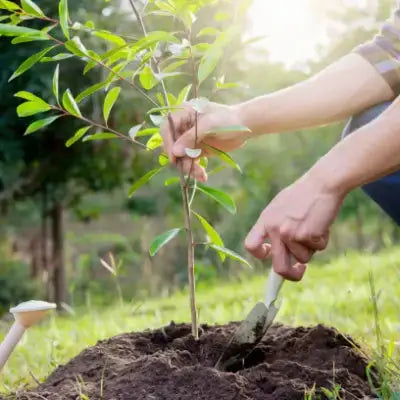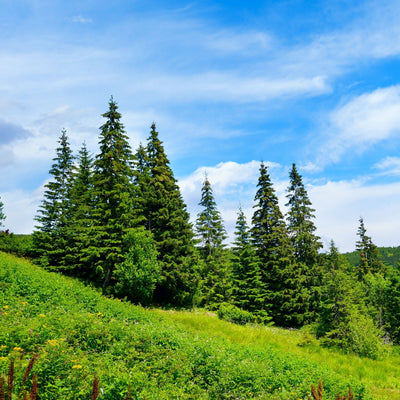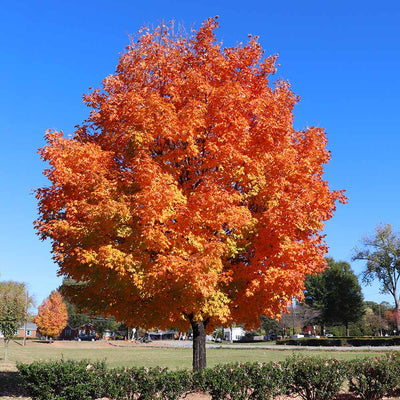Successfully Planting a Tree: Your Guide To a Thriving Tree
A tree is planted not exclusively for the enjoyment of it, but for the nurturing of our planet as well. Having a tree brings down pollution levels, provides shade, and adds beauty to the surroundings. It is also a great way to enhance the fauna of the region. Having a tree in your house that you planted yourself is a great way to boost pride and joy. No matter if you're planting it for yourself or for some greater divine reason, planting requires proper care and nurturing. It is imperative to follow the instructions in this guide religiously to get the help you need to plant it.
Step-by-Step Guide to Planting a Tree
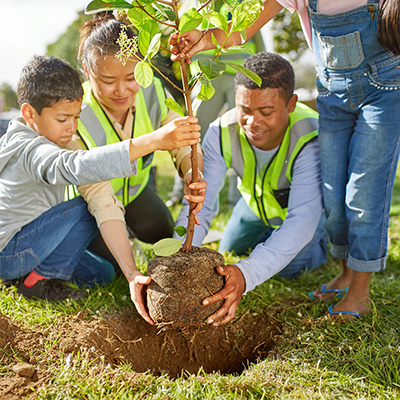
Unpacking the tree or taking it from the box
One of the most exciting parts of this day is to plant the tree. However, this is not something you get to do first. Before you do anything, you must get the tree and prepare it for the ceremony. This includes getting it out of the container it comes in. This is the first step of planting a tree. If you are planting a bare-root tree, you just need to soak the roots in some water for a couple of hours. This gets the roots ready for planting in the best possible way.
Digging the Hole of Correct Dimensions
Next, you have to excavate to a depth which ought to be twice as deep as the diameter of the rootball, and one and a half times that as deep. This makes allowance for the root to branch out and settle. If the depth of the hole is insufficient, the root is bound to be constricted which is never a good sign for the plant.
Soil Preparation
Make sure to have the potting soil which you would mix with the soil taken out from the hole. After the placement of the tree, you make the hole with a mixture of soil from the hole and the suited potting soil to help the tree roots get proper nutrition and establish themselves in their environment.
Surrounding the Tree with Soil
After positioning the tree into the hole, you would feel the resistance and in return would till the soil firmly, which would help in ensuring that the soil is in full contact with the roots of the tree. This would make sure that the tree is firmly in place.
Tree Staking
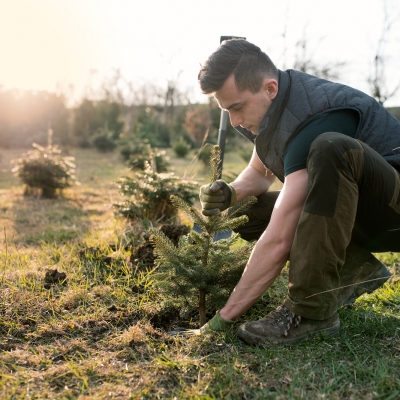
Young trees and trees grown in windy areas require tree stakes to help support them. Staking a tree while its roots take hold helps anchor it and prevents it from falling down or being uprooted. Be careful not to drive the stakes too tightly around the trunk; some trunk movement will promote stronger growth.
Tree Irrigation
Once the tree is in the ground, proper irrigation becomes a priority. Right after planting, the tree should be irrigated thoroughly to help settle the soil and moisten the roots. For the subsequent days, it is important to deeply irrigate the tree, especially if the weather is hot and dry.
Selecting the Proper Species for the Area
Finding the right tree to plant in a particular area is a critical part of the tree planting process. Climate, soil, and space available are some of the most important factors to consider in the growth of a particular species of tree. The most suitable option is usually a native tree species, as it has an important role in the ecosystem. For backyards, popular tree species planted include oaks, maples, and pines, while larger species are suited for planted forests or reforestation projects.
Consider evaluating the height and growth of an individual tree. Consider what impact it will have on the environment. Pick a tree that will suit the area without overcrowding pre-existing plants and structures.
Maintenance and Care of Trees
Nurturing Trees While planting, a tree is to be taken cared of, and for them to flourish, certain requirements have to be set in place..
Mulching
Applying mulch on a newly planted tree will help retain moisture, control weed growth, and regulate soil temperature. Make sure to keep a space between the mulch and the tree’s base to keep the moisture from getting trapped and causing the tree to rot.
Regular Watering
Within the first year, it is very important to keep the soil constantly wet. As the tree starts to grow a deeper root system, less watering will be required. Make sure to not keep the soil too wet, as wet soil can rot the roots.
Pruning
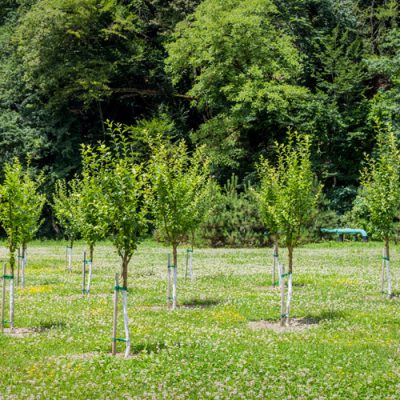
Pruning is very important to a tree in order to promote growth and strength in the structure, as well as to keep the tree healthy. Prune the tree, eliminating any broken or dead branches. Also, cut any branches that may be growing excessively to the point of competing with the tree, as well as branches that may be too dense. Pruning the canopy of trees is a good practice to promote light reaching the lowest branches so that branches do not get too dense.
Applying Fertilizers
Applying fertilizers is essential whenever the soil is deficient of some essential minerals. Conduct soil studies to determine lacking elements to apply thoroughly a balanced fertilizer.
Shielding the Tree from Invasive Species and Illness
Take a healthy tree and routinely inspect it for signs of pests and diseases. If you see any, you would want to correct the tree immediately with the appropriate chemical for the pests or the fungus. In addition, you can control the tree’s issues by routinely clearing the vicinity of soil and debris.
While you're there, a good addition is to plant other trees and bushes on your property. Planting trees enhances the environment by improving air quality, providing animal habitats, and offering shade. In addition, the following are other trees you can plant:
-
Loblolly Pine: An evergreen that grows rapidly, is very useful to a diverse set of wildlife, and helps prevent soil erosion.
-
Sugar Maple: A tree that does well in cold areas of the world, appreciated for its rich fall colors and maple syrup.
-
Red Oak: A large and strong tree that provides plenty of shade along with being a home to many birds and small mammals.
By doing so, you will be increasing the planet’s vitality and will also be actively fighting climate change.
Go to TN Nursery for all your tree nursery
Tree planting symbolizes a gesture of optimism and affection for humanity. If you are a beginner in your tree planting endeavor, you can be assisted by TN Nursery, which offers many trees, shrubs, and plants. In order to obtain personalized gardening help, you should come to our store so that you can get to know our gardening experts and our products.
FAQs
What’s the 10/20/30 rule for tree planting?
The 10-20-30 rule pertains to planting trees such that they do not interfere with one another’s growth. According to the rule, small trees should be at least 10 feet apart, medium-sized trees should be 20 feet apart, and large trees should be 30 feet apart. This way, each tree can have adequate root space to access sunlight without being overcrowded.
How do I plant a tree successfully?
To begin with, there are a number of very important factors to consider when planting a tree. First, choose a tree that fits your location, biogeoclimatic zone, and its associated vegetation. Second, the hole to be dug must be two times the width of, and one and a half times deeper than, the rootball. Third, the tree should be placed in the hole with the vertical nutrient-rich soil and be kept perpendicular to the ground. Fourth, the tree should be watered for the first few days and the rest thoroughly.
Which is the most common mistake made in tree planting?
The most common mistake is planting the tree root too deep. A tree root too deep will more than likely choke and die. The root ball should be planted at the top and flush with the surface of the soil. Another example is the incorrect watering of the tree. What occurs is root rot or dehydration, which is a defeatist scenario.
Should I plant loblolly pine?
Loblolly pines do extremely well in places with soil that drains well and where the tree will receive plenty of exposure to sunlight. Not to mention, it is a tree species with rapid growth. It reaches a greater height in a few years and, courtesy of the remarkable growth, serves an ecological purpose. It serves as a windbreak, helps in the control of erosion, or is useful in large-scale forestry projects.
Is October too late to plant a tree?
The month of October does seem like a good period to plant trees, especially in the cooler parts of the world. The soil, during this period, is still warm enough for the tree roots to thrive and grow, and the tree will be able to settle before the growing period starts. Just remember to give the tree a good watering and mulch around the tree to preserve it during the winter.
Why did Bill Gates say not to plant trees?
Mr. Gates disapproves of tree-planting exercises aimed at addressing climate change. He supports tree-planting but explains that it is not a 'carbon emission' reduction strategy. He feels that climate change is not best addressed by trees but by technology and emission reduction on a global scale.
